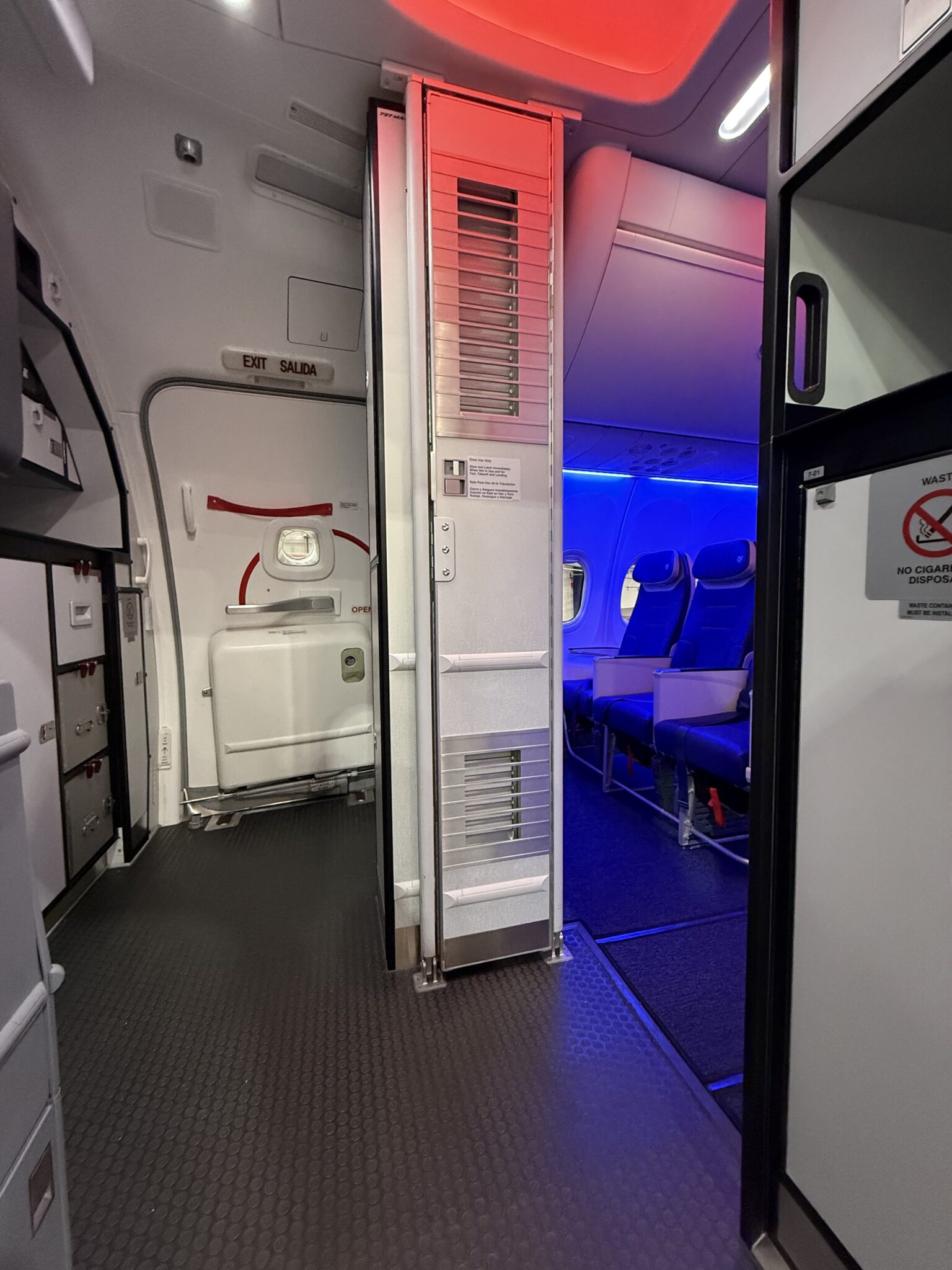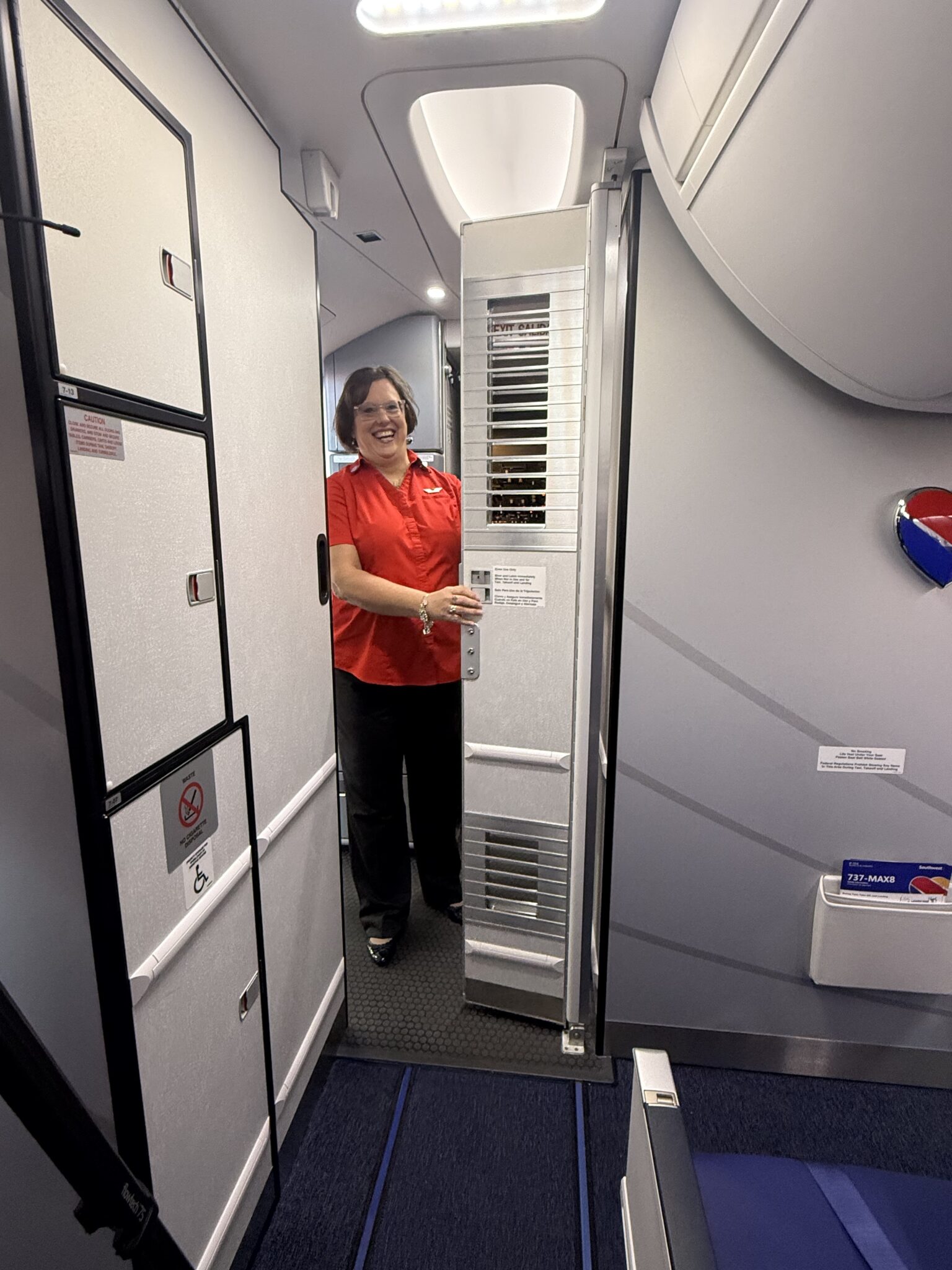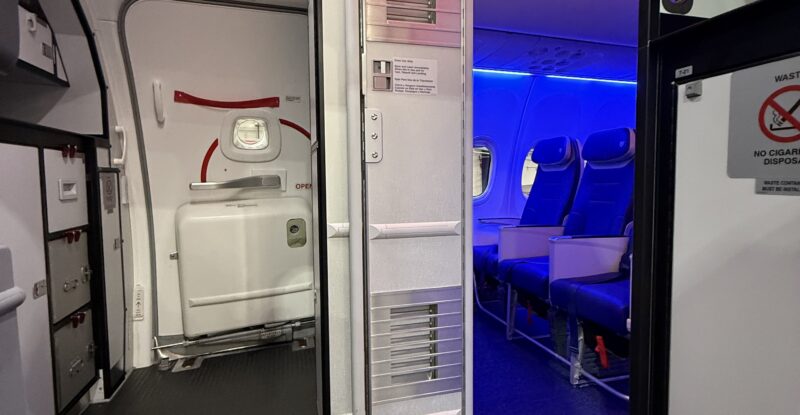Southwest Airlines has become one of the first US carriers to deploy a retractable secondary cockpit barrier on board its aircraft, and says it expects to be flying as many as 26 Boeing 737s with the security feature before year-end.
“[W]e expect to take delivery of a couple of more new planes with them installed over the next couple of weeks,” a Southwest spokesperson told Runway Girl Network after the first equipped twinjet, a 737 MAX 8, entered service on 29 August.
Indeed, every new aircraft delivered to the all-737 operator will come off the line with the lightweight, retractable secondary barrier already installed, adding another layer of protection for the airline’s crew members.
“By the end of the year, we should have 26 in the fleet,” Southwest said.
On equipped aircraft, cabin crew members deploy the barrier any time a pilot needs to exit or enter the flight deck, creating an additional secure area while the door is open during flight. Southwest’s crews are being trained in the new procedure.
A response to the 9/11 attacks, the US Federal Aviation Administration is requiring all carriers operating under Part 121 in the United States to equip new aircraft with an Installed Physical Secondary Barrier (IPSB). Whilst the FAA’s original deadline required installations by August 2025, the agency recently extended the deadline by one year, until August 2026.
During this one-year exemption period, existing security procedures are being used by crew members on aircraft not fitted with an IPSB. These include the use of a trolley to block the entrance to the forward galley during those brief instances when the cockpit door is open, such as to accommodate pilots’ use of the lavatory or their meal service.
Even though it has a year to meet the FAA’s mandate, Southwest has opted to take the bull by the horns and take delivery of aircraft with the lightweight, retractable barrier already installed by Boeing at the factory. Driving the carrier’s decision is its Safety Management System remit, which takes a proactive approach when it comes to enhancing safety wherever possible.

Southwest’s debut of the IPSB is a signal that other 737 operators in the US may be poised to follow suit, given that the IPSB is certified and offerable by the US airframer. It is not immediately clear if the IPSB is available on other Boeing types, including the 787 and 777.
Retrofitting existing aircraft isn’t yet required by law and retrofit options aren’t yet certified. Southwest is, however, engaged with Boeing and the FAA and will evaluate retrofit options when appropriate. Until then, Southwest’s current flight deck security procedures remain effective across its fleet.
 Related Articles:
Related Articles:
- US airlines get more time to install secondary cockpit barriers
- ALPA hits back as US airlines seek delay to cockpit barrier rule
- AmSafe Bridport unveils cockpit barrier for commercial aircraft
- SCHROTH reveals secondary cockpit barrier for A320, A330 and A350
All images and video credited to Southwest Airlines












